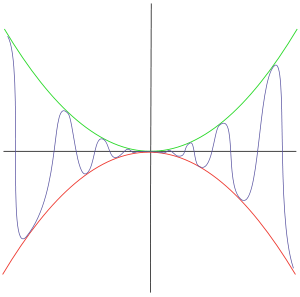Principle of permanence

In mathematics, the principle of permanence is that a complex function (or functional equation) which is 0 on a set with a non-isolated point is 0 everywhere (or at least on the connected component of its domain which contains the point). There are various statements of the principle, depending on the type of function or equation considered.
For a complex function of one variable
For one variable, the principle of permanence states that if f(z) is an analytic function defined on an open connected subset U of the complex numbers C, and there exists a convergent sequence {an} having a limit L which is in U, such that f(an) = 0 for all n, then f(z) is uniformly zero on U.[1]
Applications
One of the main uses of the principle of permanence is to show that a functional equation that holds for the real numbers also holds for the complex numbers.[2]
As an example, the function es+t-eset=0 on the real numbers. By the principle of permanence for functions of two variables, this implies that es+t-eset=0 for all complex numbers, thus proving one of the laws of exponents for complex exponents.[3]
See also
References
- ↑ 'The Language of Science, Tobias Dantzig, Joseph Mazur, and Barry Mazur, 2007, Penguin Books, pp. 98, 212.
- ↑ Dauben, Joseph W. (1979), Georg Cantor: his mathematics and philosophy of the infinite, Boston: Harvard University Press, ISBN 978-0-691-02447-9 .
- ↑ Gamelin, T. Complex Analysis, UTM Series, Springer-Verlag, 2001c